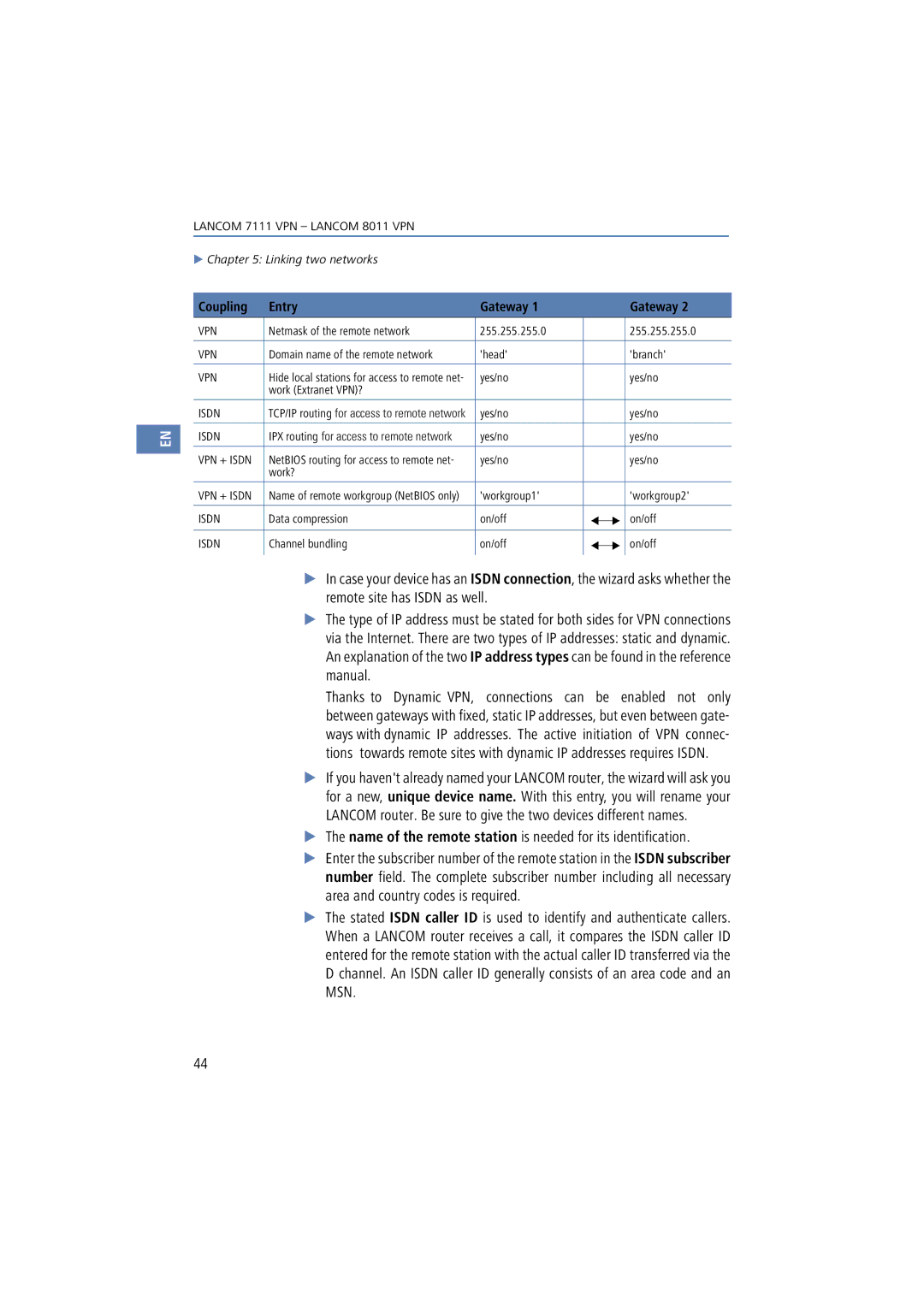
EN
LANCOM 7111 VPN – LANCOM 8011 VPN
Chapter 5: Linking two networks
Coupling | Entry | Gateway 1 |
|
|
| Gateway 2 |
VPN | Netmask of the remote network | 255.255.255.0 |
|
|
| 255.255.255.0 |
|
|
|
|
|
|
|
VPN | Domain name of the remote network | 'head' |
|
|
| 'branch' |
|
|
|
|
|
|
|
VPN | Hide local stations for access to remote net- | yes/no |
|
|
| yes/no |
| work (Extranet VPN)? |
|
|
|
|
|
ISDN | TCP/IP routing for access to remote network | yes/no |
|
|
| yes/no |
|
|
|
|
|
|
|
ISDN | IPX routing for access to remote network | yes/no |
|
|
| yes/no |
|
|
|
|
|
|
|
VPN + ISDN | NetBIOS routing for access to remote net- | yes/no |
|
|
| yes/no |
| work? |
|
|
|
|
|
|
|
|
|
|
|
|
VPN + ISDN | Name of remote workgroup (NetBIOS only) | 'workgroup1' |
|
|
| 'workgroup2' |
|
|
|
|
|
|
|
ISDN | Data compression | on/off |
|
|
| on/off |
|
|
| ||||
|
|
|
|
|
|
|
ISDN | Channel bundling | on/off |
|
|
| on/off |
|
|
| ||||
|
|
|
|
|
|
|
In case your device has an ISDN connection, the wizard asks whether the remote site has ISDN as well.
The type of IP address must be stated for both sides for VPN connections via the Internet. There are two types of IP addresses: static and dynamic. An explanation of the two IP address types can be found in the reference manual.
Thanks to Dynamic VPN, connections can be enabled not only between gateways with fixed, static IP addresses, but even between gate- ways with dynamic IP addresses. The active initiation of VPN connec- tions towards remote sites with dynamic IP addresses requires ISDN.
If you haven't already named your LANCOM router, the wizard will ask you for a new, unique device name. With this entry, you will rename your LANCOM router. Be sure to give the two devices different names.
The name of the remote station is needed for its identification.
Enter the subscriber number of the remote station in the ISDN subscriber number field. The complete subscriber number including all necessary area and country codes is required.
The stated ISDN caller ID is used to identify and authenticate callers. When a LANCOM router receives a call, it compares the ISDN caller ID entered for the remote station with the actual caller ID transferred via the D channel. An ISDN caller ID generally consists of an area code and an MSN.
44
